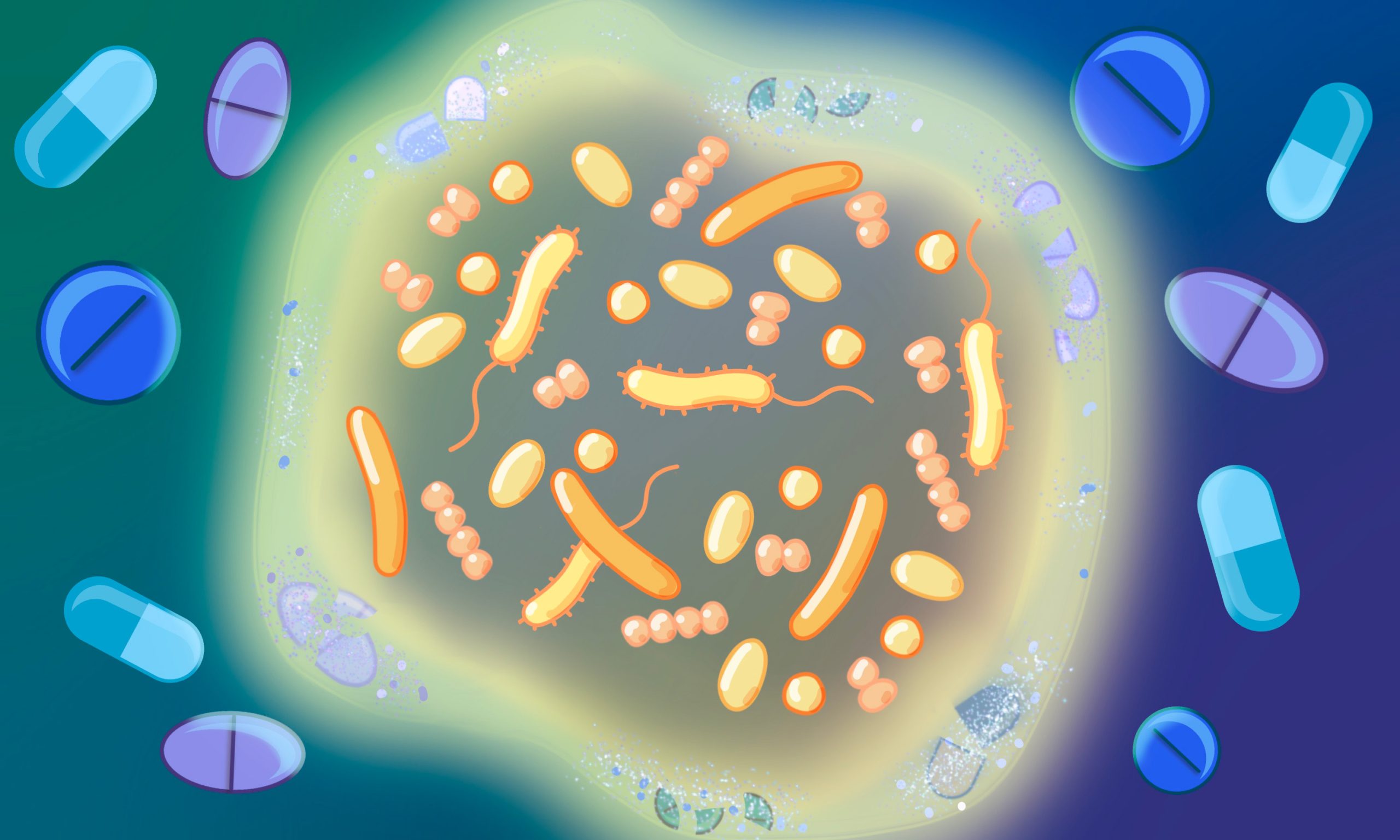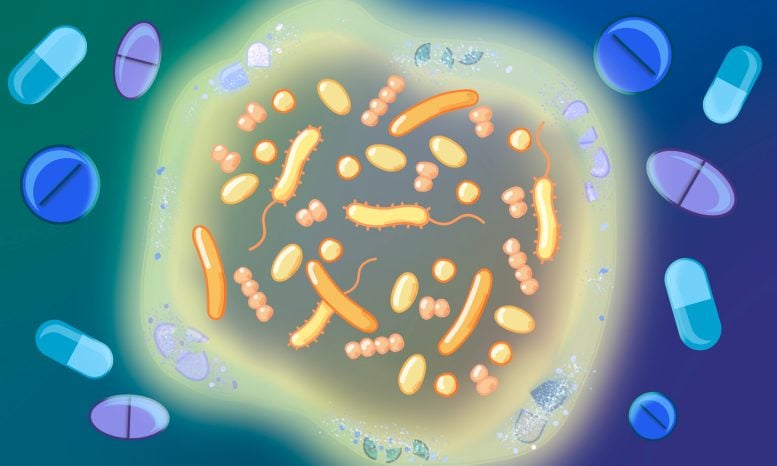

Drug-sensitive bacteria can develop resistance when part of microbial communities, utilizing cross-protection mechanisms.
Many human medications can directly inhibit the growth and disrupt the function of bacteria in our gut microbiome. However, researchers at EMBL Heidelberg have found that this impact is diminished when these bacteria form communities.
In a first-of-its-kind study, researchers from EMBL Heidelberg’s Typas, Bork, Zimmermann, and Savitski groups, and many EMBL alumni, including Kiran Patil (MRC Toxicology Unit Cambridge, UK), Sarela Garcia-Santamarina (ITQB, Portugal), André Mateus (Umeå University, Sweden), as well as Lisa Maier and Ana Rita Brochado (University Tübingen, Germany), compared a large number of drug-microbiome interactions between bacteria grown in isolation and those part of a complex microbial community. Their findings were recently published in the journal Cell.
For their study, the team investigated how 30 different drugs (including those targeting infectious or noninfectious diseases) affect 32 different bacterial species. These 32 species were chosen as representative of the human gut microbiome based on data available across five continents.
They found that when together, certain drug-resistant bacteria display communal behaviors that protect other bacteria that are sensitive to drugs. This ‘cross-protection’ behavior allows such sensitive bacteria to grow normally when in a community in the presence of drugs that would have killed them if they were isolated.
Surprising Resilience of Bacterial Communities
“We were not expecting so much resilience,” said Sarela Garcia-Santamarina, a former postdoc in the Typas group and co-first author of the study, currently a group leader in the Instituto de Tecnologia Química e Biológica (ITQB), Universidade Nova de Lisboa, Portugal. “It was very surprising to see that in up to half of the cases where a bacterial species was affected by the drug when grown alone, it remained unaffected in the community.”
The researchers then dug deeper into the molecular mechanisms that underlie this cross-protection. “The bacteria help each other by taking up or breaking down the drugs,” explained Michael Kuhn, Research Staff Scientist in the Bork Group and a co-first author of the study. “These strategies are called bioaccumulation and biotransformation respectively.”
“These findings show that gut bacteria have a larger potential to transform and accumulate medicinal drugs than previously thought,” said Michael Zimmermann, Group Leader at EMBL Heidelberg and one of the study collaborators.
However, there is also a limit to this community strength. The researchers saw that high drug concentrations cause microbiome communities to collapse and the cross-protection strategies to be replaced by ‘cross-sensitization’. In cross-sensitization, bacteria that would normally be resistant to certain drugs become sensitive to them when in a community – the opposite of what the authors saw happening at lower drug concentrations.
Shifting Dynamics at High Drug Concentrations
“This means that the community composition stays robust at low drug concentrations, as individual community members can protect sensitive species,” said Nassos Typas, an EMBL group leader and senior author of the study. “But, when the drug concentration increases, the situation reverses. Not only do more species become sensitive to the drug and the capacity for cross-protection drops, but also negative interactions emerge, which sensitize further community members. We are interested in understanding the nature of these cross-sensitization mechanisms in the future.”
Just like the bacteria they studied, the researchers also took a community strategy for this study, combining their scientific strengths. The Typas Group are experts in high-throughput experimental microbiome and microbiology approaches, while the Bork Group contributed with their expertise in bioinformatics, the Zimmermann Group did metabolomics studies, and the Savitski Group did the proteomics experiments. Among external collaborators, EMBL alumnus Kiran Patil’s group at Medical Research Council Toxicology Unit, University of Cambridge, United Kingdom, provided expertise in gut bacterial interactions and microbial ecology.
As a forward-looking experiment, the researchers also used this new knowledge of cross-protection interactions to assemble synthetic communities that could keep their composition intact upon drug treatment.
“This study is a stepping stone towards understanding how medications affect our gut microbiome. In the future, we might be able to use this knowledge to tailor prescriptions to reduce drug side effects,” said Peer Bork, Group Leader and Director at EMBL Heidelberg. “Towards this goal, we are also studying how interspecies interactions are shaped by nutrients so that we can create even better models for understanding the interactions between bacteria, drugs, and the human host,” added Patil.
Reference: “Emergence of community behaviors in the gut microbiota upon drug treatment” by Sarela Garcia-Santamarina, Michael Kuhn, Saravanan Devendran, Lisa Maier, Marja Driessen, André Mateus, Eleonora Mastrorilli, Ana Rita Brochado, Mikhail M. Savitski, Kiran R. Patil, Michael Zimmermann, Peer Bork and Athanasios Typas, 24 September 2024, Cell.
DOI: 10.1016/j.cell.2024.08.037